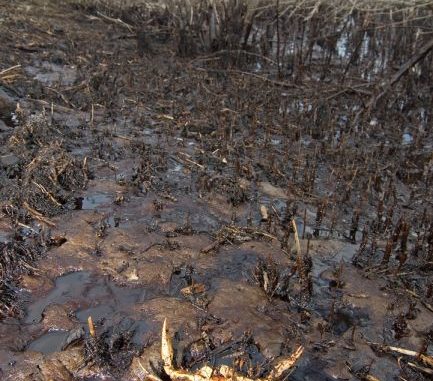
Gulf coast scientists find higher levels of cancer-causing pollutants than originally recorded; BP disputes claims
The level of cancer-causing pollutants left behind in Gulf waters by the BP oil spill was greater than reported by the federal government, according to a report issued this week by a group of independent scientists.
The report, disputed by BP, questions whether some waters should have been opened to fishermen during the three-month spill, citing the unsafe levels of toxic chemicals to which fish and other sea life would have been exposed.
A team of independent scientists from throughout the Gulf Coast compiled their collected data to “take a big picture look” at the conditions during the spill and immediately afterward, according to Paul Sammarco, a scientist at the Cocodrie-based Louisiana Universities Marine Consortium and the study’s lead researcher.
The scientists determined that the levels of polycyclic aromatic hydrocarbons, a cancer-causing pollutant, was up to 3,800 times greater than levels considered safe for human consumption, the report says. Concentrations were especially high off Terrebonne Parish, Galveston, Texas, and Pensacola, Fla., according to a recent report in the Houma Daily Courier.
The levels reported at the time by National Oceanic and Atmospheric Administration showed levels were within safe ranges, the scientists’ report says.
The report doesn’t address whether fish harvested from those areas posed a danger to consumers who ate them.
Gulf seafood is tested for safety, and that continued to be the case after the spill. Consumers were concerned about contamination from the spill, which made seafood harder to sell and prompted the creation of the Gulf Seafood Marketing Coalition. It sought to market and showcase Gulf seafood after the spill.
NOAA Fisheries spokeswoman Connie Barclay said the agency hadn’t “had sufficient time to review this study to offer a comment on it.”
BP spokesman Jason Ryan, however, questioned the study’s findings.
“The testing conducted by state and federal agencies was far more extensive and scientifically accurate than the methods employed for this (new) study,” Ryan said in an email response to The Courier and Daily Comet’s questions. “The study you mention is based on a small data set that was not collected and analyzed in a uniform manner.”
The study’s findings, published Thursday in the scientific journal Marine Pollution Bulletin, “raised the question of whether it was appropriate to open the fisheries,” Sammarco said. “Our data says probably not. Theirs says yes.”
A difference in methodology is the likely reason for the difference, he said, adding that there’s no reason to suspect the supplied data was manipulated.
“Some of the technology used to measure was a bit dated,” he said. “The computer model they used may have been inappropriate for the problem they were facing.”
Sammarco compared the methods used by the federal agency to determining the nation’s population by sampling random spots. If you count people in farm communities but not cities, he said, you don’t get a true picture of how many people live here.
The oil and dispersants wound up in patches beneath the water’s surface that were not “readily sampled by government scientists and regulators,” he said.
The scientists’ data covers the period from June 2010, when the Deepwater Horizon was still spewing oil, to November 2010, four months after the well was capped.
The findings show that it’s probably time to review the methods used, Sammarco said.
“We can’t change the past,” he said. “The object is how do we get it right and make sure we’re making good, solid decisions.”
But BP contends it is the research group’s methods that are flawed.
Ryan said “unusual” procedures were used in some of the testing. For example, he said, instead of taking samples of water that contained oil, in one part of the study, the research team dragged oil-absorbing material behind a boat for 45 minutes, then took the material out of the water and squeezed the captured oil into jars. It then estimated the amount of water to which the material had been exposed.
“This type of sampling is not precise or accurate, and the research teams’ estimates conflict with the results of thousands of water samples that were collected by state and federal agencies and other research teams, using established sampling methods, with tests to measure the actual level of oil in the water,” Ryan said.
The researchers also mention, but did not measure the background concentration levels that were already present in the environment, he said.
“Importantly,” Ryan added, “the study data is also not temporal; in other words, it simply looks at the highest recorded concentrations, not how the concentrations decreased over time. Decisions on federal fisheries openings were based on temporal data.”
Under the protocols developed by state and federal agencies, harvest waters could not reopen until oil from the spill was no longer present and the seafood samples from the area successfully passed both sensory analysis by trained experts and a chemical analysis to confirm that there were no harmful oil residues, he said. The FDA also visited more than 100 seafood processors and wholesalers, collecting seafood samples and inspecting processing plants for biological, chemical, and physical hazards.
“NOAA, the FDA and the Gulf states have tested more than 10,000 seafood samples,” Ryan said, “and seafood has consistently tested 100 to 1,000 times lower than the safety thresholds established by the FDA.”
EDITOR’S NOTE: Houma Daily Courier Managing Editor Dee Dee Thurston filed this report.


